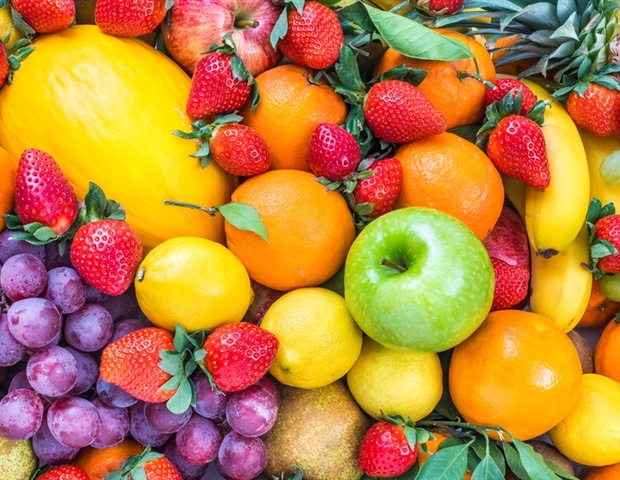A high-fat weight-reduction plan shouldn’t be sufficient to trigger short-term fatty liver illness. Nevertheless, if this weight-reduction plan is mixed with the consumption of drinks sweetened with liquid fructose, the buildup of fat within the liver accelerates and hypertriglyceridemia —a cardiovascular danger issue— can seem. That is defined in a research on a mouse experimental mannequin, printed within the journal Molecular Vitamin and Meals Analysis and led by Professor Juan Carlos Laguna, from the School of Pharmacy and Meals Sciences, the Institute of Biomedicine of Barcelona (IBUB) and the Physiopathology of Weight problems and Vitamin Networking Biomedical Analysis Centre (CIBEROBN).
The research counts on the collaboration of the researchers Aleix Sala-Vila and Iolanda Lázaro, from the Hospital del Mar Medical Analysis Institute (IMIM), and José Rodríguez-Morató, from IMIM-Hospital del Mar and MELIS-Pompeu Fabra College, amongst different consultants.
Fructose and lipid metabolism
Fructose is without doubt one of the commonest sweeteners within the meals business. This straightforward sugar (monosaccharide) is industrially obtained from corn syrup, a product derived from this gramineae. With an excellent sweetener energy and low manufacturing prices, fructose is utilized by the meals business to sweeten drinks, sauces and processed meals, regardless of the scientific proof that associates it with metabolic illnesses that are danger components of cardiovascular pathologies.
In keeping with the brand new research, the impact brought on by fructose within the improve within the synthesis of fatty acids within the liver is extra decisive than the exterior introduction of fat via the weight-reduction plan.
In high-fat diets that are supplemented with liquid fructose, this monosaccharide is ready to induce a rise within the de novo lipogenesis —that’s, the formation of fat via sugar— and an inhibition of the lipid oxidation within the liver.”
Professor Juan Carlos Laguna, Division of Pharmacology, Toxicology and Therapeutical Chemistry
“Particularly, fructose consumption impacts instantly the expression and exercise of the nuclear issue ChREBP. As soon as activated, this issue causes a rise within the expression of enzymes that management the hepatic synthesis of fatty acids”, he continues. “Parallelly, fructose consumption reduces the exercise of the nuclear receptor PPARalfa, which is the primary accountable for the controlling of the expression of genes that code the enzymes concerned within the fatty acid oxidation (mitochondrial and peroxisome) within the liver”.
As said within the preclinical research, the mix of the saturated fats from dietary origin and the induction of the endogen synthesis of fatty acids is what causes the emergence of the fatty liver. “Furthermore, we’re describing for the primary time that fructose —not like high-fat diets— will increase the expression of the PNPLA3 protein, related to the looks of hypertriglyceridemia, a danger issue for cardiovascular illnesses”, notes Núria Roglans, co-author of the research and member of the talked about Division.
Fatty liver illness in people
A number of epidemiologic research associated the consumption of drinks which might be sweetened with fructose to the non-alcoholic fatty liver illness (NAFLD), a pathology for which there isn’t any particular pharmacological remedy. In these sufferers, de novo lipogenesis contributes as much as a 30% of the lipids collected within the liver, whereas in wholesome folks, this synthesis brings solely the 5% of hepatic lipids.
The animal mannequin characterised by the group will probably be of potential curiosity to check future medication to deal with the non-alcoholic fatty liver illness (NAFLD). “Individuals with this pathology have a better endogenous synthesis of lipids within the liver than wholesome folks. Due to this fact, the results described on this research would possibly seem in people as nicely”, notice the consultants.
“Sadly, —they proceed— the fatty liver is the place to begin for extra critical pathologies, similar to steatohepatitis and cirrhosis. It’s a virtually asymptomatic pathology, though in some instances, some delicate unspecific digestive issues can seem. Other than following a nutritious diet and bodily exercise, there isn’t any environment friendly therapy in opposition to this pathology for now”.
The results described within the research are solely observable if fructose is taken in its liquid type. “Relating to sweetened drinks, fructose is rapidly absorbed and it reaches the liver massively, producing the described metabolic alterations. To discover a comparability, we might discuss concerning the look of a fructose overdose when that is taken in sweetened drinks”, notes the group.
“Nevertheless, once we eat fruit, the quantity of taken fructose is quite a bit decrease in comparison with a sweetened drink. Additionally, the method of chewing it and the presence of different components within the fruit, similar to fiber, slows down the absorption of fructose and its arrival to the liver”, conclude the authors.
Supply:
Journal reference:
Velázquez, A.M., et al. (2022) ChREBP-driven DNL and PNPLA3 Expression Induced by Liquid Fructose are Important within the Manufacturing of Fatty Liver and Hypertriglyceridemia in a Excessive-Fats Weight-reduction plan-Fed Rat Mannequin. Molecular Vitamin and Meals Analysis. doi.org/10.1002/mnfr.202101115.

